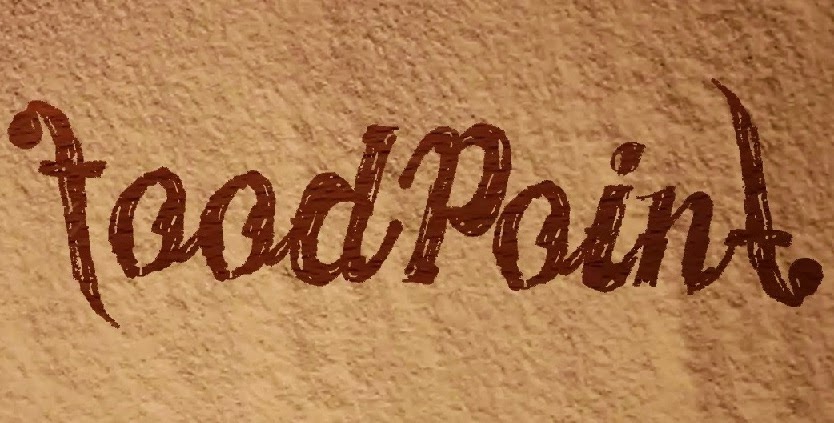4.01 Herb-Crusted Rack of Lamb – Intermediate – Meat & Poultry
This recipe was requested by my new friends Dan and
Louna, who recently visited and stayed with me. As they were staying for around a week, this gave
me several opportunities to show off my cooking (don’t judge, we’ve all done
this in some form or another!).
There was one small snag, however: Dan cannot eat gluten
or lactose. This isn’t by choice (as he’ll be the first to lament), so in order
to prevent any potential health hazards, I really needed to be mindful of the
ingredients.
Luckily, I have had some experience in the past cooking
for some friends who had jumped onto the Paleo bandwagon, and those foods are
also gluten and lactose free. I cooked a couple of my previous recipes (such as
the Spiced Chicken w/ Sweet Potato Mash & Spinach Aioli from Season 1 and
the Chimichurri Beef Fillet w/ Sweet Potato & Zucchini from Season 3), but
more variety was needed, so I decided to crack out this older recipe and revamp
it a bit.
Dan and Louna are both avid vloggers and thanks to some
of their videos I got a fair bit of exposure, so I thought it’s only fair that
I return the favour. Please check out Louna’s YouTube channel and/or Dan’s YouTube channel
to see what this kooky couple gets up to!
Now, on to the food…
Ingredients:
2x rack of lamb, with saddle still attached
1 cup shelled pistachio nuts, raw and unsalted
1 cup fresh parsley, packed
¼ cup extra virgin olive oil
Zest of ½ lemon
Pinch of salt
A rack of lamb can be anywhere from 300-700g depending on
what sort of mutant sheep your butcher sources from. Usually it’s easier to
just count 8 ribs per rack. The smaller the rack, the thicker the crust will be.
If you want to just get 1 very large rack instead of 2 smaller, then that
should be fine too.
Some of you may also be wondering “what the heck does ‘with
saddle still attached’ mean?”. Well, the saddle is a layer of fat that runs
along the fillet of lamb. You will find that a lot of butchers and supermarkets
will trim off the fat before putting a rack of lamb out for sale (this is
referred to as “frenched”, and is done for aesthetic appeal), but you need some
fat in order for the crust to adhere to the lamb. A few millimetres thick will
suffice, so if your lamb is too fatty, you may need to perform some surgery on
it!
In case it seems misleading, “shelled” pistachios have
actually had the shells removed. On the off chance that someone has translated
this page, I don’t want to be responsible for any misunderstandings. You can
buy shelled pistachios in basically any grocery store these days. If you can’t find
them, you’ll need to find raw unsalted pistachios, remove the shells yourself,
then measure out 1 cup.
Method:
1. Preheat oven to 180°C (350°F).
2. Place the pistachios, parsley, lemon zest, olive oil
and salt into a food processor (or a mortar and pestle) and blend to a rough
paste, then place it aside until needed. (The nuts should still be a bit chunky
to provide texture.)
3. Using a sharp knife, score the fat on the saddle,
taking care not to cut into the meat. (‘Scoring’ means to cut a series of
slashes in a diagonal criss-cross pattern. If you cut into the meat a little,
don’t worry, just be as careful as you can.)
4. Fry the lamb in a pan saddle-side down over a medium
high heat for 2-5 minutes, or until the fat begins to render down and go
crispy.
5. Turn the lamb over and remove it from the heat, then
press small handfuls of the crust over the saddle until you have a fairly even
layer. (Be careful, the pan – and probably the lamb – will still be very hot!)
6. Place the pan into the oven and roast for 20-40
minutes or until your preferred rarity is reached. (Obviously you need to be
using an ovenproof pan for this to work. If you do not have a pan that can go
from the cooktop into the oven, then just warm a baking tray in the oven first
and transfer the lamb into that after frying. Placing the lamb onto a cold tray
could slow the cooking process.)
7. Once the lamb is cooked, remove it from the oven and
allow it to rest for 10 minutes before serving. (I like to serve it with a
salad of baby spinach, roast pumpkin, and a lemon juice and olive oil dressing.
If this seems familiar, that’s because I’ve used this combination in my Lamb& Roasted Pumpkin Salad from Season 1. These flavours go well with any type
of lamb.)
Serves 4-6
If you have a recipe request, it's not too late! Please send me an email and I'll see what I can do.




